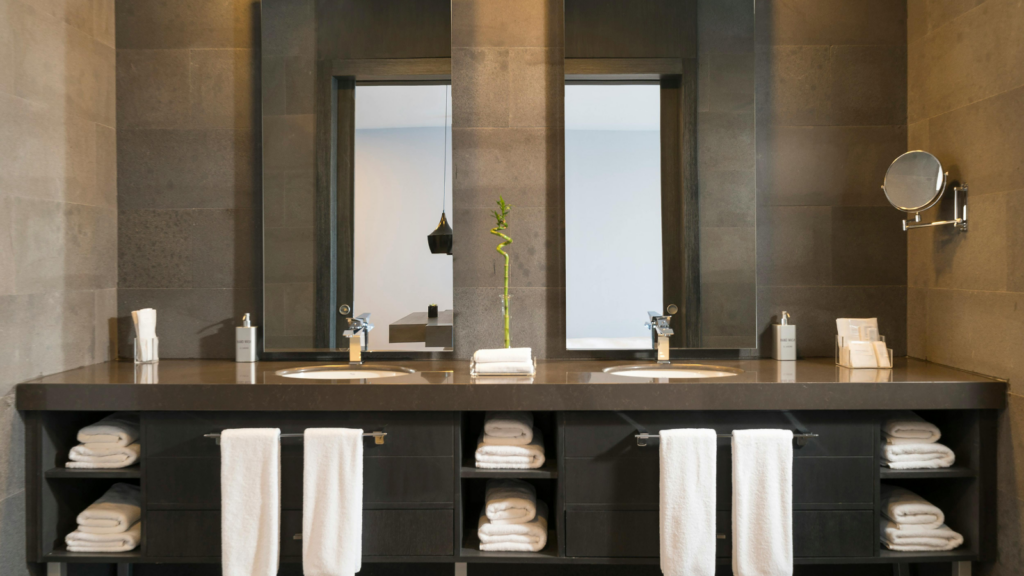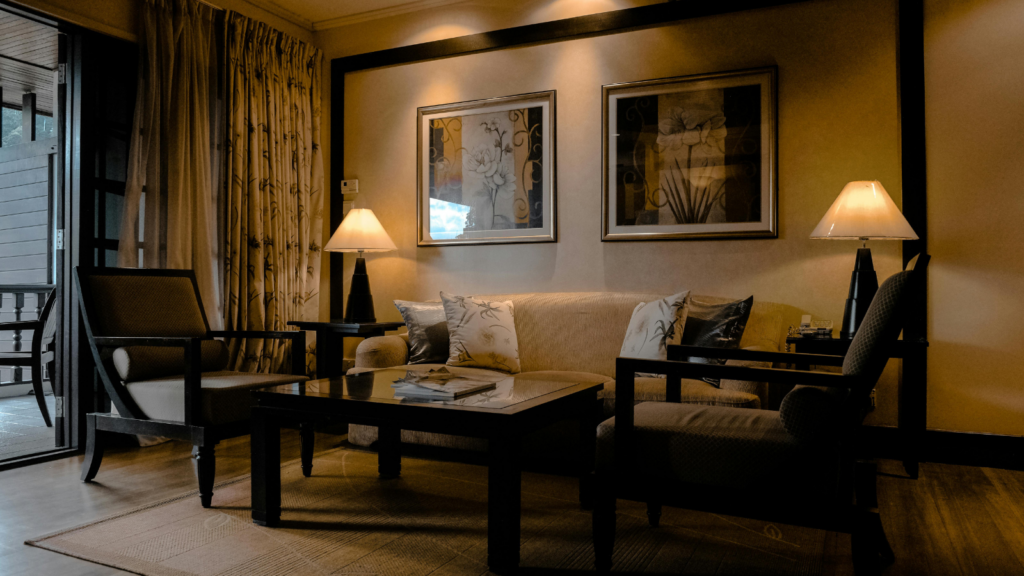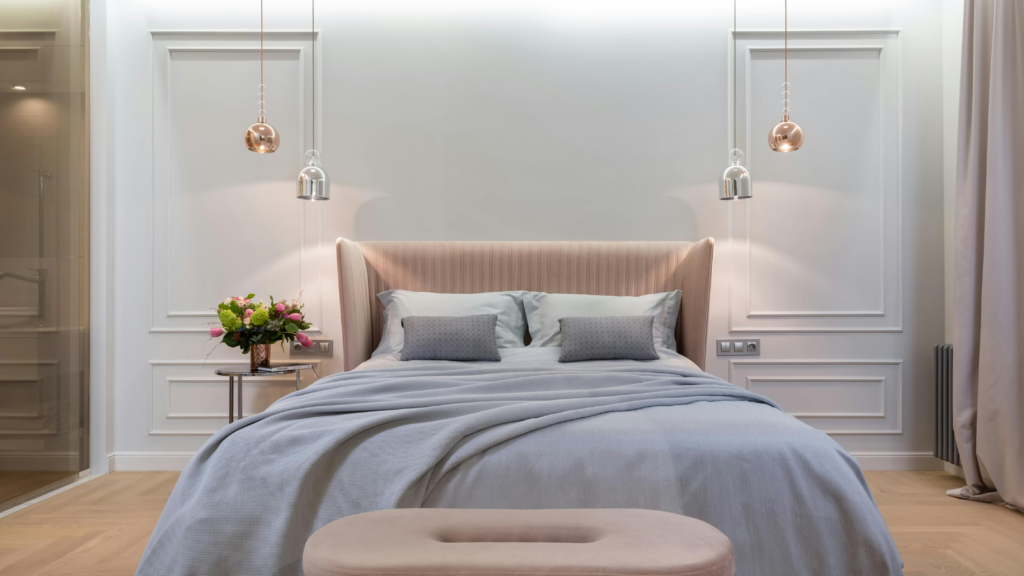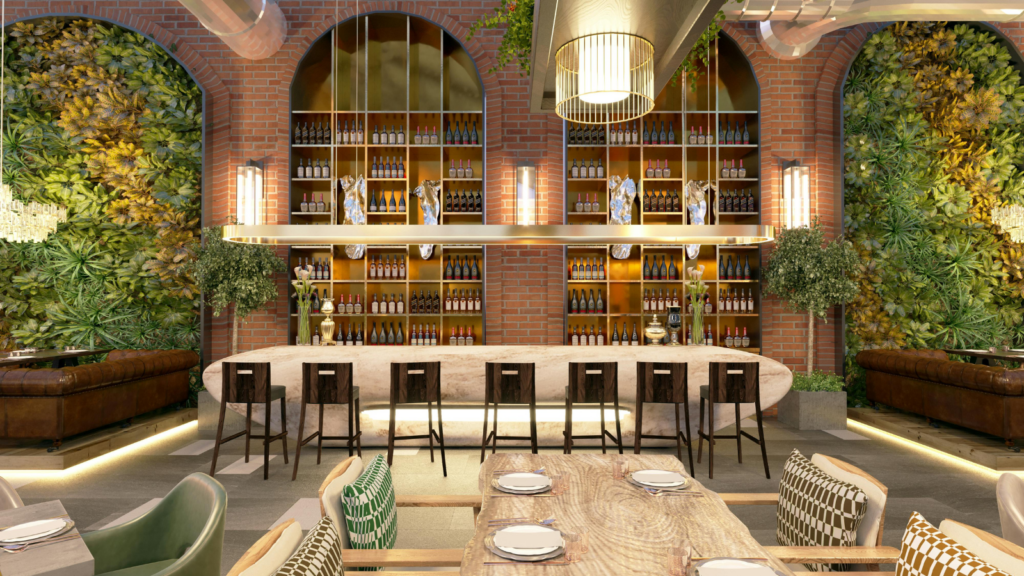Stepping into a hotel, what’s the first thing that captures your attention? Is it the warm, inviting ambiance or the sophisticated, chic decor? It’s the interior design that sets the tone. Hotel interior design isn’t just about aesthetics; it’s about creating an experience, a feeling of being welcomed into a space that’s both luxurious and comfortable.
From the plush lobby sofas to the meticulously designed guest rooms, every element plays a crucial role in a hotel’s overall appeal. It’s a blend of functionality, comfort, and style, all designed to make a guest’s stay unforgettable. In this article, we’ll delve into the world of hotel interior design, exploring its importance and how it shapes the hospitality industry.
Hotel Interior Design
Hotel interior design plays a pivotal role in shaping the guests’ experiences. This encompasses thoughtful selection of decor elements, arrangement of furniture, display of art pieces, and utilization of space. Distinctly themed areas in a hotel, such as the lobby, dining area, and guest rooms, all demand a unique, well planned interior design approach.
Essential Aspects of Hotel Interior Design

Central to hotel interior design involves striking a balance between style, comfort, and functionality. Hotels don’t solely focus on impressing guests with stunning visuals. Ensuring comfort becomes essential, which makes furniture selection a crucial aspect, along with the functionality of ambient elements like lighting and acoustics.
Hotel interior design continues to evolve. It’s adapting to environmental sustainability practices, customer demands, and technological advancements, shaping the future of the hospitality industry on its journey.
Key Elements of Hotel Interior Design
Balance involves carefully distributing the elements of design such as colors, textures, and space, to create harmony. An imbalance can make the hotel interiors appear chaotic, while a balance ensures a visually comforting environment. For example, a large, bold-colored painting can be balanced with smaller, muted-colored accessories on the opposite side of the room.
An architect applies rhythm by repeating design elements, creating a pattern or progression. In a hotel context, rhythm could come from repeating pillow patterns in a guest room, rhythmic light fixtures in the hallway, or a pattern of artworks in the lobby.
Proportion refers to the size relationship between elements in a room, and scale refers to how these proportions relate to human dimensions. A well-proportioned room offers more comfort by fitting the human scale. For example, a lounge chair in a hotel room doesn’t overshadow the rest of the furniture but falls in sync with the overall proportion and scale.
Impact of Design on Guest Experience

Selection of Color Palette: Colors bear certain emotional connotations, impacting guests’ emotions subtly. A strategic use of hues, for instance, soothing blues in spas or vibrant yellows in breakfast nooks, evokes desired feelings in guests, thereby influencing their hotel experience.
Lighting and Atmosphere: Architects utilize lighting to create different atmospheres in various sections of a hotel. Ambient lighting in reading lounges, or vibrant lights in workout zones, set the mood for guests, and play a part in their overall satisfaction.
Spatial Distribution: The arrangement and proportion of spaces impacts the efficiency and comfort of a guest’s stay. Proportionate spaces often give a sense of order and balance, contributing to an inviting and relaxed atmosphere.
Furniture Selection and Placement: Furniture choice is cardinal in defining the usability and comfort of a space. A fair blend of aesthetic, functional, and comfortable furniture adds value to guest experience.
Top Trends in Hotel Interior Design for 2024

- Inclusive Design: Hotel interior design of 2024 engages a broader range of guests by incorporating inclusive design principles. For example, accessible seating areas and adaptable room layouts serve guests with mobility needs, while sensory-friendly spaces meet the needs of guests with sensory processing disorders.
- Biophilic Design Elements: To meet sustainability initiatives and guest preferences, hotels lean more towards biophilic design elements in 2024. Plants, water features, and natural lighting are prominent examples. Hotel interior design adopts the use of local materials to enhance the sense of place while reducing carbon footprints.
- Smart and Contactless Technology: Tech integration continues to be pivotal in hotel interior designs for 2024. For example, keyless and contactless check-ins for reducing physical contact and smart room controls for the ease of adjusting lighting, temperature, etc.
Showcasing Hotel Interior Design
Hotel interior design isn’t just about aesthetics; it’s a strategic tool that can shape guest experiences and drive business success. It’s clear that the design trends of 2024, such as inclusive design, biophilic elements, and smart technology, are reshaping the hospitality industry. These trends not only meet diverse guest needs but also address sustainability and technological advancements. The right blend of decor, furniture, and ambiance can evoke positive emotional responses, ensuring guests have a memorable stay.
